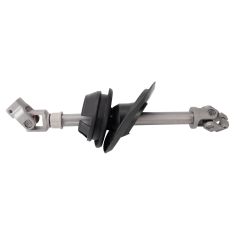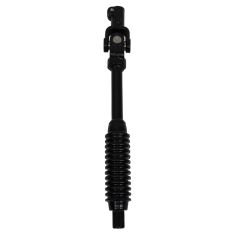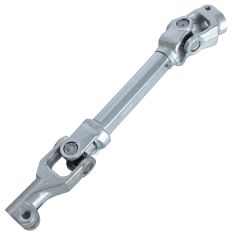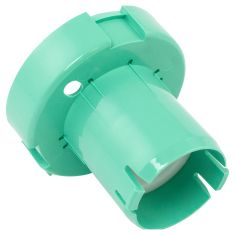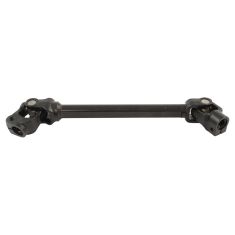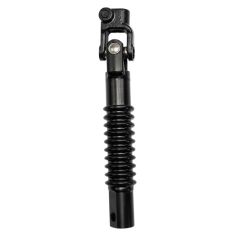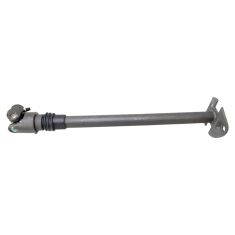Steering Shafts & Couplers
-
-
- Air Deflectors & Valance Panels
- Battery Trays & Related
- Body Panels
- Bumpers & Related - Front & Rear
- Convertible Tops, Soft Tops, & Parts
- Decal & Stripe Kits
- Emblems & Nameplates
- Engine Compartment Trim
- Frame Parts & Bushings
- Fuel Door Parts
- Fuel Tank Filler Neck
- Grille
- Header Panel
- Hood & Hatch Lift Supports
- Hood Latch & Catch Brackets
- Hood Release Cable
- Jack Pads
- Radiator Supports
- Rust Repair Panels
- Splash Shields & Fender Liners
- Tailgate Cables
- Tailgate Hinges & Related
- Weatherstripping
-
- Car Covers
- Exterior Lighting
- Exterior Parts & Accessories
- Exterior Safety & Security
- Exterior Storage
- Fender Flares
- License Plate Brackets & Frames
- Mud Flaps & Splash Guards
- Nerf Bars, Side Steps, Running Boards
- Radio Antenna
- Rain Deflectors
- Roll Bars, Light Bars, & Related
- Roof Rack
- Skid Plates
- Spare Tire Carriers & Related
- Spare Tire Covers
- Tire Care
- Tonneau Covers
- Tow Hooks & D-Shackles
- Towing Accessories
- Trailer Hitch & Components
-
- Accelerator Pedal Pad
- Auto Carpet
- Brake Pedal Pad
- Clutch Pedal Pad
- Console Parts
- Dash Pad Cover
- Dash Vents
- Floor Mats & Liners
- Horns & Horn Parts
- Interior Parts & Accessories
- Mirror - Interior Rear View
- Seat Cover and Sets
- Seat Heater Kits
- Seat Parts and Accessories
- Sun Visors & Related
- Trunk & Cargo Parts
-
- Accelerator Pedals & Sensors
- Alarms, Control Modules, & Remote Start
- Cruise Control Switch & Lever
- Electrical Parts
- Hazard Switch
- Ignition Key Lock Cylinder
- Ignition Switch
- Keyless Entry Remote & Related
- Neutral Safety Switch
- Parking Assist Cameras & Monitors
- Power Mirror Switch
- Power Seat Switches
- Power Window Switch
- Radio, Navigation, Entertainment
- Reverse Light Switch
- Trunk Release & Lock Solenoids
- Turn Signal Switches and Levers
- Windshield Wiper Switch
-
- Idler Arm
- Pitman Arm
- Power Steering Hoses
- Power Steering Oil Cooler
- Power Steering Pressure Sensor
- Power Steering Pump
- Power Steering Pump Cooling Fan
- Power Steering Pump Pulley
- Power Steering Pump Reservoir
- Steering Dampers
- Steering Knuckles and Spindles
- Steering Rack and Gear Boxes
- Steering Shafts & Couplers
- Steering Wheels & Column Parts
- Tie Rods & Adjusting Sleeves
-
-
-
-
58
6
10
10
-
Notify When Available$84.95Save 27%List $115.95 Save $31.00Brand: TRQ - PSA27389$84.95Save 27%List $115.95 Save $31.00
-
Notify When Available
Replaces 2005-15 Toyota Tacoma 4 Wheel Drive Lower Intermediate Steering Shaft TRQ PSA67601
Brand: TRQ - PSA67601$69.95Save 29%List $98.95 Save $29.00Brand: TRQ - PSA67601$69.95Save 29%List $98.95 Save $29.00 -
Notify When Available
Replaces Toyota Rav4 Upper Intermediate Intermediate Steering Shaft TRQ PSA67602
Brand: TRQ - PSA67602$62.95Save 20%List $78.95 Save $16.00Brand: TRQ - PSA67602$62.95Save 20%List $78.95 Save $16.00 -
Notify When Available
Replaces Ford Expedition F150 Front Lower Intermediate Steering Shaft TRQ PSA32855
Brand: TRQ - PSA32855$79.95Save 27%List $109.95 Save $30.00Brand: TRQ - PSA32855$79.95Save 27%List $109.95 Save $30.00 -
Notify When Available
Replaces Chevrolet GMC Cadillac Olds Steering Column Bearing DIY Solutions SUS10406
Brand: DIY Solutions - SUS10406$25.45Save 27%List $34.95 Save $9.50Brand: DIY Solutions - SUS10406$25.45Save 27%List $34.95 Save $9.50 -
Notify When Available$74.95Save 27%List $102.95 Save $28.00Brand: TRQ - PSA67599$74.95Save 27%List $102.95 Save $28.00
-
Notify When Available$74.95Save 23%List $97.95 Save $23.00Brand: TRQ - PSA67598$74.95Save 23%List $97.95 Save $23.00
-
Notify When Available$59.95Save 25%List $79.95 Save $20.00Brand: TRQ - PSA71596$59.95Save 25%List $79.95 Save $20.00
-
Notify When Available$79.95Save 25%List $106.95 Save $27.00Brand: TRQ - PSA50092$79.95Save 25%List $106.95 Save $27.00
-
Notify When Available
Replaces Chevrolet GMC Cadillac Intermediate Steering Shaft with Coupler TRQ PSA66711
Brand: TRQ - PSA66711$77.95Save 24%List $102.95 Save $25.00Brand: TRQ - PSA66711$77.95Save 24%List $102.95 Save $25.00
loading...
Choose the Make of Your Vehicle
